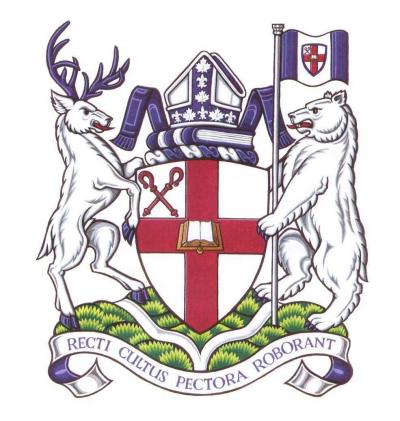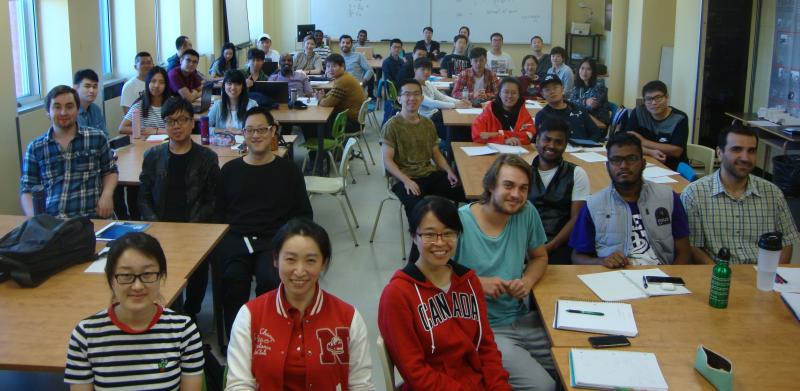
CS 410, Software Engineering
This is the on line page for the Bishop's Software engineering
class.

Presentations Nov 16, 21, 23
Each project has 15 minutes. Volunteer now to go first, soon I will
assign your slots, ready or not.
>Last Quiz 3 on Friday, Nov. 9
covering testing and maintainence
Assignment 3, individually, one piece of code...
Now overdue. I wanted it by Nov. 2
Assignment 1, read something...
Short review of a current software engineering article.
Go to the library, find an interesting article about software
engineering in one of the journals, and write a brief summary (and your comments, if any),
by Friday, January 14, 2018.
A web source will be acceptable if it is seriously interesting. We
will put these summaries in the binder kept in J-9(?).
Please include Author, Year, & Publication (book, journa, or web reference.)
At the library, go left past the circulation desk, continue into
the room that says "Periodical Room"
Before you sit down on a comfy sofa, keep going until you come to
the last round table on your right, behind that are shelves. (MPS as of
Sept. 2014)
January 2017: The library is now in temporary location
near the sports complex.
The recent Computer journals are on shelves, under QA76. (Older
copies are bound and in the basement
-- now unavailable, ask about electronic access.)
January 2018 The library is back. Ask directions to find the periodicals!
Kyle says: "I was surprised by the actual good amount of
periodicals the library has for computer science, physics and
music!"
Projects
This page now needs revision as to steps and dates...
I believe you have now formed yourselves into groups.
By Friday, 21 September, 2018 Will each group
please submit to me a brief description of what you hope to do, and
the names of the group members.
If you are not part of a group, please let me know that.
Progects will be presented near the end of the semester
Assignment 2, Requirements
and Design
An on-line voting system for Canadian federal elections: Risks, problems, and solutions.
To be done in 2 parts:
At beginning of class, to allow
discussion.
- For Monday, January 30, Your view of requirements. What must
this system do, what should it do. What are the constraints of
the Canadian environment and of "over the web" systems?
What are the risks?
- Design using Scenario's, Use Case and module or class
decomposition. For Wednesday, February 1.
Project Documents (Winter 2013)
- Neural Nets
- Line 'Em Up
- J-9 Social Networking
Active design rewiews, Tuesday, 26 February --
Please look at these in advance, and be prepared
- as reviewers to answer questions posed by
the designers, as well as make suggestions,
- as designers, to ask qestions to the
reviewers, as well as explaining your design to them.
Each team might want to decide who will
represent them as designer, and who will review each other
project.
Fall 2014
- Guitar Frets
- Adventures of Lolo (reconstructing a classic video game)
- Class Diagram
- Classroom Finder
- Magic, the Gathering
Showing the state of the blackboard, 9:50 Feb. 21. Thanks, Tegan.
The solid arrows show the normal scenario of a successful vote. The
double-dashed arrows hint at abnormal scenaria of invalid
credentials or voter trying to vote twice. We discussed the risk of
too-strict authentication making it hard to vote, or too-lax
allowing fradulent votes.
Useful Links
Many readings - A useful course website
http://sunnyday.mit.edu/16.355
"Not a regular software engineering course," many papers for
discussion.In particular, No
Silver bullet.
.. One of many on-line sources. Do your own Google search ...
Parnas, Software
Aging
Seven Sins
of the Specifier
Humour: How Specs
Live Forever
This is the requirements
for the project I suggested. In addition, the city rat project may
want to use the same maze file format, for flexibility of changing
the maze of sewer pipes.
By November 2, all your
project documentation and code must be submitted, paper copies of
documentation is optional, and printouts of code are unnecessary.
Order of preference:
- submit csc310 yourdirectory
- e-mail
- Access to a subversion repository
- Floppy disk
- Documents by Owl
Maintenance
phase
Each group will get the
project from another group, the above link is to the file with
instructions and changed requirements. This phase will continue
until June 16 at the latest. On June 17 there will be one last
quiz, and each maintenance group will demonstrate their work.
References
to
some
material
on
formal
methods, from 2002 (what's left)
Petri nets, the best way to model concurrent and non-deterministic
systems
Links on petri nets and
other formal methods
The current project schedule is: Behind schedule? -- Get it
done by end of November
Requirements
"What you plan to do." Should be written up and agreed to by me,
Reviewed by a student outside the group -- by the class - done
Design
Design documentation is needed for maintenance, it should answer
somebody's question, "How do I
find where that feature is implemented?" e.g. "Where is the
logic for verifying that a chess move is legal?"
Top Level: (Architecture) by 23 February
Detailed (Module design) by - (hopefully done)
User documentation
How do I actually run it, what should I expect it to do? This should
be developing in sync with the Req/Design/Implementation.
Implementation
Parnas says the coding should go fast, remember? Working code by 22
November, with specification and design documentation that
corresponds. (see "How and Why to Fake it")
Testing
All the time!
Beta version: Goal of the Construction Phase, by the last week
of classes
Here's how it will work.
- Each group will designate one person to
act as resource and guide for their project.
- Other group members will be assigned to
test another project. Give them the requirements and user
manual by Tuesday at 4:30, and be prepared to help them get
started, should the manual be unclear.
- All documentation and code should be
accessible. One way to do this is to use the csc310 Subversion
repository, as we did earlier in the lab. Some printed copies
might be handy.
- Testers will proceed to try out the
project, playing the game, writing articles or reading the
online newspaper, etc.
- In the spirit of the Software
Engineering Code of Ethics, "Be fair and supportive of your
colleagues. In particular, ... review the work of others in an
objective, candid, and properly documented way", as you all
"participate in lifelong learning, ... improving your ability
to create safe, reliable, and useful quality software ... and
produce accurate, informative, and well-written
documentation." (From principles 7: Colleagues, and 8: Self)
- Produce a joint report noting problems
found, suggestions for improvement, and designating someone to
look into each thing as appropriate. (Given the time
constraints, some issues may be noted as subjects for future
maintenance.)
- This report should be sent to me, the
project group, and the testers by Friday morning.
- Work can continue in the Lab Friday
afternoon, I will be there after 3:00 (pension meeting
before that).
Maintenance
Based upon the reports received, each of you will be given a modest
maintenance task.
by Lin Jensen. e-Mail:

